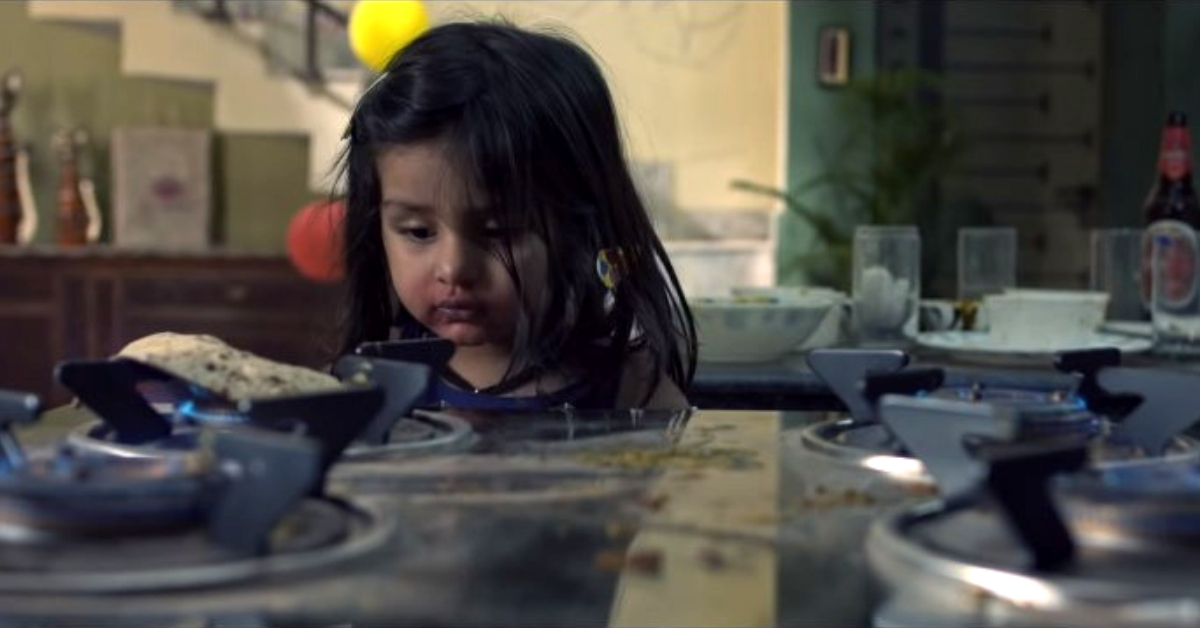WhatsApp groups are usually fun to be a part of. I have always been a mute spectator to the drama that unfolds in them, until I saw a trailer shared by a friend, a new parent of a one-year-old on the group.
“Super scary…” he captioned it.
It revolves around the story of two-year-old Pihu. She is adorable, sweet, curious, innocent, just like any other toddler her age. But also, all alone in her own house where her mother seems to be lying dead.
Inspired by a true story, the trailer of Pihu, Vinod Kapri’s upcoming film claims to be – “Every parent’s worst nightmare”.
It chronicles the story of a toddler trapped in her own house with dangerous everyday items–a gas burner, broken glass bottles, burning iron, an oven that has been left on or even an open balcony on the top floor of a highrise.
Watch the trailer here:
While the sneak peek of the film sheds light on the various situations that would leave a child absolutely helpless, it also opens a conversation about what parents need to do to prepare their young wards for unforeseen circumstances.
What then are a few steps parents can take to help their wards identify an ‘emergency’ situation and seek the right help? Here are a few pointers:
Teach your children what an emergency situation is
Tell them how an emergency is different from a regular everyday situation, with simple examples.
Define no-go or no-touch areas
What is a danger zone? Things to not touch have to be told and taught, whether it is wires, plugs, switches etc.
Create an emergency contact book
Even as young as kids are, they are quick to learn how to use the phone. Create a phonebook that has emergency contacts (police, fire brigade, family doctor, other individuals). If the child has only begun to understand numbers, mark them in a different colour, draw symbols or figures next to them to identify the kind of emergency and who would be the right person to reach.
These emergency contacts must include your next-door neighbours, your immediate family, friends in the vicinity or closest relatives. Keep the phonebook at an easily accessible place for the child.
Don’t forget to introduce your child to a next-door neighbour you trust. In an emergency, it will help them be calm and seek help.
If you can, make sure you help your child memorise these emergency helpline contacts. Whether a child is at home or outside, an emergency could strike anytime. If you have an emergency cell phone at home instead of the landline, teach your kids to speed dial.
Read More: Emergency in A Train? 23 Railway Stations in TN Will Now Have Medical Centres
Disaster management techniques/Using games to teach safety tips
Safety techniques such as stop/ drop/ roll/ find a safe spot under sturdy furniture within the house/ evacuate the home safely, can be taught to kids interactively through everyday games.
Role-play an emergency situation and enact necessary steps to the child to help them learn better. Look up safety games online to play and learn.
And while we hope your children never have to face a crisis like this, ensure that they are always prepared. If these measures helped you, share it with other parents and families that you think can benefit from it.
(Edited by Shruti Singhal)
Like this story? Or have something to share?
Write to us: contact@thebetterindia.com
Connect with us on Facebook and Twitter.
If you found our stories insightful, informative, or even just enjoyable, we invite you to consider making a voluntary payment to support the work we do at The Better India. Your contribution helps us continue producing quality content that educates, inspires, and drives positive change.
Choose one of the payment options below for your contribution-
By paying for the stories you value, you directly contribute to sustaining our efforts focused on making a difference in the world. Together, let's ensure that impactful stories continue to be told and shared, enriching lives and communities alike.
Thank you for your support. Here are some frequently asked questions you might find helpful to know why you are contributing?


